Although Costco Wholesale faces the same negative supply chain and inflationary pressures affecting all food retailers, the company’s performance in the fourth quarter was a blockbuster.
As of August 29, Costco’s net income was $1.67 billion or $3.76 per share. Net income in the fourth quarter of last year was US$1.389 billion or diluted earnings per share of US$3.13. Net income for this fiscal year was US$5.01 billion, or diluted earnings per share of US$11.27, compared with US$4 billion in the previous year, or diluted earnings per share of US$9.02.
Excluding the impact of natural gas inflation and currency, same-store sales in the United States increased by 10.3% in the fourth quarter.
Net sales for the quarter increased by 17.5% to 61.44 billion US dollars from 52.28 billion US dollars last year. Net sales for this fiscal year increased by 17.7% from last year’s 163.22 billion U.S. dollars to 192.05 billion U.S. dollars.
Passenger traffic or shopping frequency in the United States increased by 8.8%, and Costco’s average transaction volume or shopping basket increased by 5.6% in the United States. E-commerce increased by 8.9%.
In the fourth quarter, membership fee income was US$1.234 billion, an increase of 9.7%. The renewal rate in the United States and Canada was 91.3%, an increase of 0.3%.
Despite the good news, the retailer stated that it is restricting “critical items such as bath towels, towel rolls, Kirkland Signature water, and high-demand cleaning-related SKUs related to rising demand in Delta,” Costco’s Chief Financial Officer Richard Galanti said on the earnings call.
“[We] are ordering as many as possible and receiving it as early as possible, and I think, as evidenced by recent sales results, we are doing a good job with this,” Galanti said.
Costco said that it is experiencing port delays, rising labor and freight costs, and shortages of everything from containers, trucks and drivers to various parts, raw materials and ingredients, resulting in most of its ordinary merchandise sold out within two weeks.
Galanti also said that fresh food inflation “increased to mid-to-high single digits, led by meat, from high single digits to low double digits due to rising feed, labor, and transportation costs.”
The company said that in terms of the core profit margin of Costco sales, in the fourth quarter, the core profit margin fell by 40 basis points, of which non-food rose slightly, and food and groceries fell slightly year-on-year. The drop in fresh food prices is the core basic driving force, and the core has fallen this quarter.
Looking ahead to the holidays, the retailer said it plans to expand its product range to cope with supply chain effects.
“For Christmas, it used to be just trees and decorations, home furnishings and electronics,” Galanti said. “Today, this is all these things, plus the house on the barbecue grill, and even summer supplies, but anything you can get. Again, I think we have done a very good job of increasing our suppliers. We can and Also make sure we launch new products and stay creative and innovative in food and groceries. So I think from this point of view, although sometimes I look at each other, businessmen and traffic people, everyone is saying, boy , This—when will this end? In fact, I think we have done a good job in this regard.”
Costco, located in Issaquah, Washington, has 809 warehouses worldwide. The company is ranked fourth in Progressive Grocer’s 2021 PG 100 list of top North American food and consumer goods retailers, and also has e-commerce sites in the United States, Canada, the United Kingdom, Mexico, South Korea and Taiwan.
Post time: Sep-28-2021












